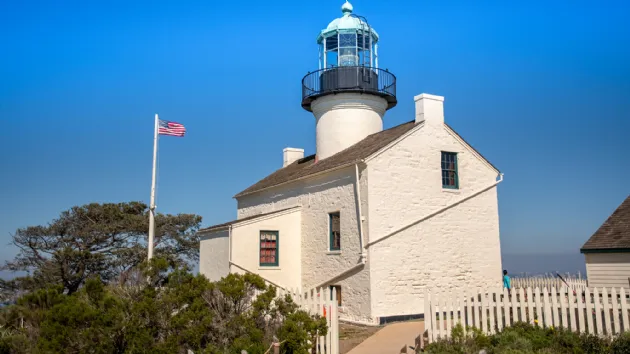Today, Cabrillo is best remembered as an explorer and conquistador. Though his expeditions in the New World were cut short, Cabrillo left his mark on history in both San Diego and in South America.
Originally sailing to Cuba, Cabrillo joined Hernán Cortés in Mexico, where he fought alongside the Spanish colonists and against the native Aztec population. Diseases like smallpox, which were entirely foreign to the American prior to the arrival of Europeans, decimated the Aztec population, tilting the scales of war.
The encomienda system, which heavily utilized labor from the native population, characterized Spanish colonization in both South America and later along the Pacific Coast. Conflict with Native Americans often erupted into bloody battles.
While Cabrillo spent much of his life in South America, it was his brief yet impactful voyage to North America that earned his spot in Californian history books.

Statue Juan Rodriguez Cabrillo at Cabrillo National Monument
The Origin and Development of Cabrillo National Monument
As the landing point of the first European explorers on the West Coast, Point Loma on the San Diego Bay is one of the most historic places in San Diego. Though Cabrillo and his men only spent six days of their voyage there, the ripple effects from this first landing shaped the region’s future. It played a key role in the later explorations of Junipero Sera and the following development of the California Missions.
To honor this piece of San Diego history, a new Point Loma monument was proposed in the early 1900s. At the time, the land was home to the Old Point Loma Lighthouse.
The monument was set into motion by president Woodrow Wilson, who set aside land for a statue of Juan Rodriguez Cabrillo in 1913. However, the plan stalled and the statue was left incomplete, even after president Calvin Coolidge attempted to commission another group for the statue in 1926.

Main Lighthouse Cabrillo National Monument
Status as a Landmark and Renovations
In 1932, the site of the Cabrillo National Monument was finally designated as a California Historic Landmark. Major renovations followed in 1935, including a commemorative plaque honoring Cabrillo.
The planned statue of Cabrillo remained incomplete until 1949, when a statue originally created by the Portuguese government and donated to the United States in 1939 finally made its way to the Cabrillo National Monument. However, the statue was made of sandstone and had to be replaced in 1988 with a limestone replica due to weathering.
Later renovations by presidents Eisenhower and Ford would expand the Cabrillo National Monument to 140 acres and revamp the grounds, establishing it as a national park.